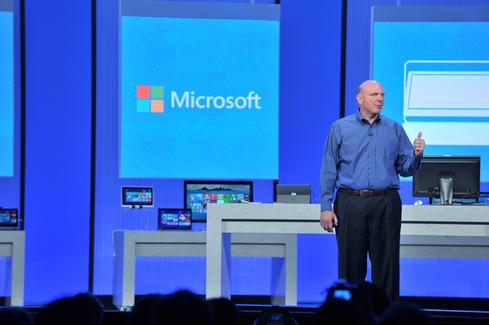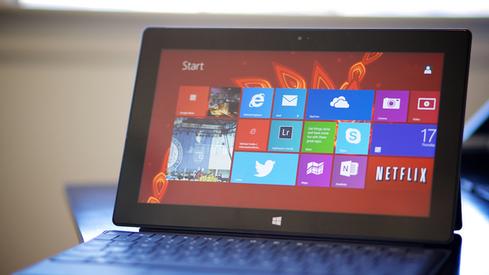Windows 9: What We Know
With Windows 8.1 floundering, Windows 9 rumors have picked up steam. What can you expect from the next version of Windows?


7 Mistakes Microsoft Made In 2013
7 Mistakes Microsoft Made In 2013 (Click image for larger view and slideshow.)
After keeping a low profile at last week's International Consumer Electronics Show, Microsoft is back in the headlines this week, thanks to a flurry of reports about Windows 9.
Based on its tepid usage share, Windows 8.1 isn't persuading many people to upgrade. Windows 9 will allegedly offer at least two improvements that could help Microsoft turn things around: the return of the Start menu, and the ability to run windowed Modern apps on the desktop. But if those items sound enticing, you'll have to be patient. The update isn't expected to appear until spring of 2015. Here is what to expect:
1. Windows 9 will introduce not only new features, but also a simpler Windows lineup
As mentioned, Windows 9 is expected to restore the Start menu, which has been absent since the original version of Windows 8. It will also allow Modern apps, currently confined to the tile-oriented Start screen, to be run in floating windows on the desktop, presumably just like legacy applications.
Windows 8.1 brought back Windows 7's start button and added a boot-to-desktop mode that allowed PC users to bypass the tablet-oriented Start screen. The changes haven't been enough to tempt longtime customers into upgrading, let alone into buying new PCs. Perhaps Windows 9's nods to the mouse-and-keyboard crowd will be better received.
Figure 1:  To some users' chagrin, Windows 8.1 brought back the Start button but not the Start menu.
To some users' chagrin, Windows 8.1 brought back the Start button but not the Start menu.
Windows 9 will also likely introduce a more unified code base among Microsoft's various Windows platforms. With assets such as SkyDrive, Windows 8 already enables users to seamlessly translate data across various devices and services. Windows 9's common code should only advance this agenda.
[Microsoft moves to bolster its customer relationship management software. Read Microsoft Parature Buy: Think Self-Service CRM.]
After initially mis-marketing how Windows 8 is different from Windows RT, Microsoft might also use Windows 9 to debut a new, more coherent set of offerings: a consumer-oriented version for ARM-based devices that will focus on Modern apps, receive frequent Windows Store updates, and eventually include the merging of Windows Phone and Windows RT; a second consumer-aimed version optimized for desktop software that will still run Modern apps and receive frequent Windows Store updates; and an enterprise-focused version that will receive fewer updates and will be available only through volume licensing.
The restored Start Menu might appear only in the latter two versions, though this point is reportedly up in the air due to the possibility that ARM-based 2-in-1 tablets and all-in-one PCs would benefit from a desktop mode.
2. Microsoft has yet to officially acknowledge Windows 9, but is expected to do so in April
Microsoft hasn't confirmed anything about Windows 9, but some of the details echo things Microsoft leaders have said, and all of the information comes from sources with good track records.
ZDNet's Mary Jo Foley reported on December 2 that Microsoft was planning a wave of Windows updates code-named Threshold. The report claimed the updates would arrive in early 2015 and deliver a foundation of "high-value activities" across platforms -- a remark reminiscent of outgoing CEO Steve Ballmer's justification for keeping Microsoft in the consumer business. These activities include Office, Bing, IT management tools, apps, games, and content -- basically every infrastructure point and user experience that might need to extend across devices.
Citing inside sources, Windows expert Paul Thurrott said a week later, on December 9, that the "next version of Windows" would bring back the Start menu and accommodate windowed Modern apps. Foley reported the same day that Microsoft would introduce a new lineup of Windows versions, including some intended to be friendlier to longtime PC users. The website The Verge subsequently cited its own unnamed source claiming that Microsoft is looking at separate Windows versions for consumers and enterprises.
Last weekend, Thurrott said Threshold would be an April 2015 release. His sources claimed Microsoft will introduce the OS at a "vision" level at its upcoming BUILD conference for developers, slated for this April in San Francisco. Thurrott said Threshold development will begin around the same time. He also said BUILD will focus on Windows Phone and Xbox.
Microsoft is likely to call Threshold Windows 9 in order to distance the OS from Windows 8 and 8.1, according to Thurrott's sources.
3. Windows 9 rumors paint Windows 8 as a failure
As the previous paragraph implies, the Windows 9 rumors can be read as an indictment against Windows 8. In public, the company remains confident about "the new Windows." But from bringing back to the Start button to using the name "Windows 9" instead of "Windows 8.x," every decision described in the reports suggest a creeping acknowledgement that the Win 8 strategy simply isn't working.
By all accounts, it isn't working. In the last few years, people have shifted more of their computing to mobile devices and delayed or cancelled PC upgrades. Late 2012 was precisely the wrong time for Microsoft to alienate its core users, but that's exactly what Windows 8 did. Even though Windows 8.1 is a worthwhile (and, for Win 8 users, free) upgrade, Net Applications found that as of December 31, only 3.6% of desktop users had bothered. Almost twice as many users were still running the original version of Windows 8, and seven-year-old Windows 7 gained almost as much ground in December as Windows 8.1 did.
All of this could be somewhat forgiven if Windows 8 had helped Microsoft take a meaningful swipe at Apple's iPad -- but it hasn't. Microsoft's Surface RT evidently sold well on Black Friday at some retail locations, but the device was discounted to the extent that Microsoft won't be making much, if any, money on individual unit sales. Even if you're inclined to view such data in the most optimistic light, it's still clear the Surface line -- and Windows tablets in general -- are living off the iPad's table scraps. The research firm IDC expects Windows tablets to account for only 10% of worldwide tablet shipments by 2017 -- a respectable amount, but still only one-third of the iPad's projected share. With Chromebooks and Android devices eating into low-end sales and Apple's products entrenched among high-end buyers, Microsoft and its OEM partners will face pressure on device prices and margins.
Demand for Windows 8.1 is still pretty flat in the enterprise, Forrester analyst David Johnson told InformationWeek this week in a phone interview. He said some companies have begun to look at Windows 2-in-1 tablets due to employee demand, but that as most businesses consider new tablet deployments, there is "still a strong preference for iOS."
Johnson also said Windows users still want the Start menu back and that some businesses are uneasy about Microsoft's shifting Windows update cycle. If recent reports are accurate, Windows 9 could address both of these concerns -- albeit not for another 16 months.
4. The Windows 9 reports reflect questions about Microsoft's leadership
As Thurrott notes, the ongoing evolution of Windows reflects changing leadership within Microsoft. Windows chief Steve Sinofsky abruptly left the company shortly before Windows 8 was released. Many of his perceived allies have since left Microsoft or been reassigned to new divisions, leading some commentators to speculate that Sinofsky, who said he left for personal reasons, was forced out. Windows 8.1's changes, meanwhile, were implemented by Julie Larson-Green and Tami Reller, who shared Sinofsky's duties after he left.
Larson-Green now oversees Microsoft's device efforts, while Reller has moved on to lead the company's marketing. Terry Myerson, who previously ran Windows Phone, currently heads Microsoft's OS efforts. Those efforts are thought to include an update to Windows 8.1 and the release of Windows Phone 8.1 before development on Windows 9 begins in earnest.
Myerson has allegedly investigated eliminating licensing fees for at least some mobile versions of Windows, which could represent a dramatic change in Microsoft's strategy. That said, reports also indicated that last spring, before Myerson had assumed command, Microsoft cut deals with OEMs to encourage the production of low-cost Windows 8.1 mini-tablets -- a contention supported by new, affordable devices that come pre-loaded with Office, such as Dell's Venue 8 Pro.
While it's impossible to say whether Windows is evolving iteratively or being reimagined as new leaders gain influence, Microsoft's OS roadmap could play a role in its ongoing CEO search. Reports indicate some candidates for Steve Ballmer's job have been uneasy about their abilities to change the company's strategy if given the role.
Michael Endler joined InformationWeek as an associate editor in 2012. He graduated from Stanford in 2005 and previously worked in talent representation, as a freelance copywriter and photojournalist, and as a teacher.
Incidents of mobile malware are way up, researchers say, and 78% of respondents worry about lost or stolen devices. But though many teams are taking mobile security more seriously, 42% still skip scanning completely, and just 39% have MDM systems in place. Find out more in the State Of Mobile Security report (free registration required).
About the Author
You May Also Like






